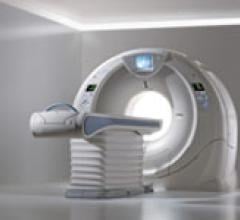
Staff education is a vital component for the successful transition to a predominantly transradial cardiac catheterization program. Educational efforts must extend beyond the cath lab. A successful program incorporates staff from the pre- and post-procedure units, telemetry unit, intensive care unit (ICU) and any other unit that routinely cares for cardiac catheterization patients.

There have been several key news items from the U.S. stent market over the past year. These include the introduction of several new stents, Cordis pulling out of the market, an expanded indication in carotid stenting and development of new stent technology that will likely open a new chapter for percutaneous interventions.
Houston Northwest Medical Center's cardiology department, along with physicians and IT staff, looked at multiple information systems related to cardiology before choosing Horizon Cardiology from McKesson in 2007. The system stood out for several reasons.
Providing exceptional cardiovascular care for patients to achieve the best possible outcomes is the number one goal for ...

Today’s generation of cath lab hemodynamic recording systems do much more than simply measure and monitor a patient’s electrocardiogram, blood pressure and other vital signs. Current systems offer detailed clinical reporting and auto-completion of data fields in the procedure report, help gather registry data, aid in tracking inventory and patient billing, and link images and cine loops to reports.
September 22, 2011 — Stentys S.A., a medical technology company commercializing a self-apposing stent to treat acute myocardial infarction (AMI), announced it has enrolled the 500-patient target of the international APPOSITION III study for its Self-Apposing Stent.
September 22, 2011 — The 15th annual scientific meeting of the Heart Failure Society of America (HFSA) will feature a session titled "Cancer Chemotherapy and Cardiotoxicity" moderated by Daniel J. Lenihan, M.D., professor of medicine at Vanderbilt University. It will focus on the effect of cancer drugs on the presence of heart failure and how oncologists and cardiologists have developed close collaboration in order to benefit patients.
Cardiac positron emission tomography (PET) is growing in popularity among cardiologists because it provides the ability ...
September 22, 2011 — Half the people who have atrial fibrillation deny or don’t know they have a higher risk for stroke, according to a new American Heart Association survey.
I repeatedly hear two competing, contradictory themes discussed at every symposia – the need to lower healthcare costs and that costs to bring new technology to market are rapidly increasing. The U.S. leadership position as a medical technological innovator is slipping to Europe, where there is a much wider selection of devices to choose from. The requirements to gain CE mark clearance are much more lenient than U.S. Food and Drug Administration (FDA) pre-market approval.

New developments in drug-eluting stents, such as biodegradable materials and bifurcated stents, are expected to prompt an increase in market value. Companies like Biosensors and Abbott are developing biodegradable and bifurcated stents to deal with concerns about thrombosis caused by long-term device implantation and to expand the type of treatable lesions, including those located at vessel branches.
When performing radiofrequency (RF) ablation to treat cardiac arrhythmia, medical professionals must balance the safety ...
The space needed and costs involved to create a hybrid operating room (OR) for a specific speciality may not be feasible, especially at mid-sized hospitals. This was the case at Middlesex Hospital in Middletown, Conn., where the facility wanted to increase procedural volume, but needed to upgrade its small operating rooms for vascular, endovascular, laparoscopic and endoscopic procedures.

One of the biggest trends is the creation of hybrid operating rooms (ORs) that bring together the best of both surgical and interventional technologies. They are centered around a high-quality angiographic X-ray imaging system, allowing new collaborative treatment strategies and new types of procedures. Users say the shift to hybrid ORs is more than a change of venue for procedures, it is a paradigm shift in medicine.
September 20, 2011 — Maquet Cardiovascular announced it has received both 510(k) clearance from the U.S. Food and Drug Administration (FDA) for its new Sensation Plus 50 cc 8 French intra-aortic balloon (IAB) catheter. The device also received CE mark approval from the British Standards Institution (BSI).
Change Healthcare Cardiology Hemodynamics is an integrated hemodynamic monitoring system for monitoring vital signs and ...
September 20, 2011 — A new study published in the Sept. 27 issue of the Journal of the American College of Cardiology reveals heart failure (HF) patients with Medicaid, Medicare or no insurance have longer hospital stays than those with private/HMO insurance. The under-insured are less likely to receive some of the recommended, evidence-based therapies for HF; they are also 22 percent more likely to die in-hospital.
September 20, 2011 — Toshiba America Medical Systems Inc. will highlight its Aquilion One computed tomography (CT) system at the American Society of Emergency Radiology (ASER) conference, Sept. 14-17, 2011 in Miami. The company will specifically showcase the system’s application in an emergency department (ED) setting.
September 20, 2011 — Boston Scientific Corp. has launched its Coyote Balloon Catheter, a highly deliverable and ultra-low profile 0.014-inch balloon dilatation catheter designed to treat patients undergoing peripheral angioplasty procedures below the knee. The company has begun marketing the product in the United States, Europe and other international markets.

 September 26, 2011
September 26, 2011








